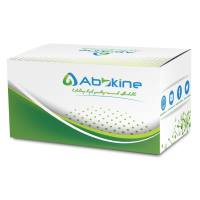Establishing Epithelial-Immune Cell Co-Cultures: Effects on Epithelial Ion Transport and Permeability
互联网
互联网
相关产品推荐

Hemagglutinin/HA重组蛋白|Recombinant H1N1 (A/California/04/2009) HA-specific B cell probe (His Tag)
¥2570

Recombinant-Candida-albicans-Iron-transport-multicopper-oxidase-FET3FET3Iron transport multicopper oxidase FET3 EC= 1.-.-.-
¥14154

通用型免疫(共)沉淀(IP/Co-IP)工具箱(磁珠/抗小鼠)
¥598

细胞亚铁离子试剂盒,用于样本中Fe2+含量检测,微量法,Cell Ferrous Ion Content Assay Kit
¥179

FCRL4/FCRL4蛋白Recombinant Human Fc receptor-like protein 4 (FCRL4)重组蛋白Fc receptor homolog 4 Short name: FcRH4 IFGP family protein 2 Short name: hIFGP2 Immune receptor translocation-associated protein 1 CD_antigen: CD307d蛋白
¥1836
相关问答

